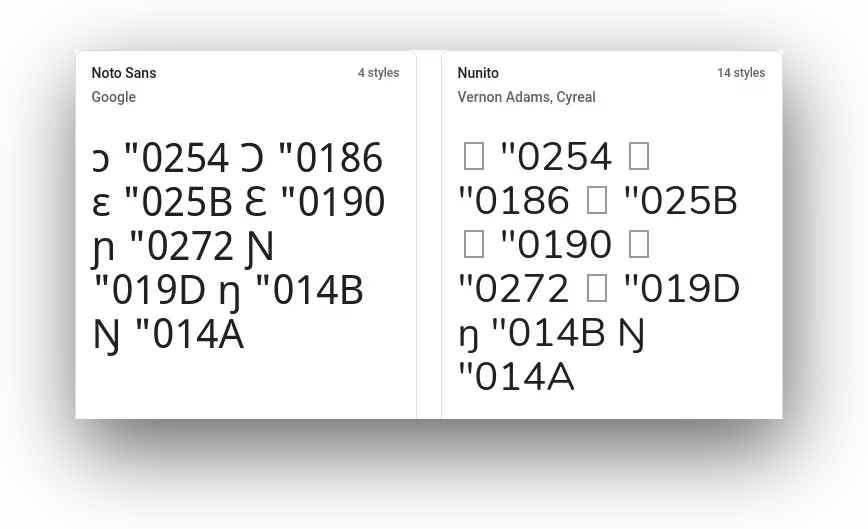Appropriate fonts for Bambara, Jula (and other Manding languages)

Noto Sans ka ɲi ani Nunito ma ɲi dɛ!
The internet is international, but not the case of all fonts.footnote [With the advent of digital typography, "font" is frequently synonymous with "typeface". Each style is in a separate "font file"—for instance, the typeface "Bulmer" may include the fonts "Bulmer roman", "Bulmer", "Bulmer bold" and "Bulmer extended"—but the term "font" might be applied either to one of these alone or to the whole typeface.]
| Glyph IPA | Unicode |
|---|---|
ɔ |
"0254 |
Ɔ |
"0186 |
ɛ |
"025B |
Ɛ |
"0190 |
ɲ |
"0272 |
Ɲ |
"019D |
ŋ |
"014B |
Ŋ |
"014A |
| Even some very common fonts such as Roboto, (Google) do not display the manding glyphs without help from the browser that performs character substitution. |
The browser will substitute missing glyphs usually from a system font. Often this substitution of glyphs from another system font may actually be acceptable or even very good. However if you don’t ever want any surprises in your web app or web page, just choose a font that is adapted to the language. The most common Google web font that displays all the IPA glyphs is Noto Sans or Noto Serif. We are also dealing specifically with manding languages here, but if your text is in Sénari(Senoufo) ou bien Wawle(Baoulé) ou encore ˈBhɛtɩgbʋʋ (Bete), the font choice is all the more important.
| This site uses as the default font Noto Sans |